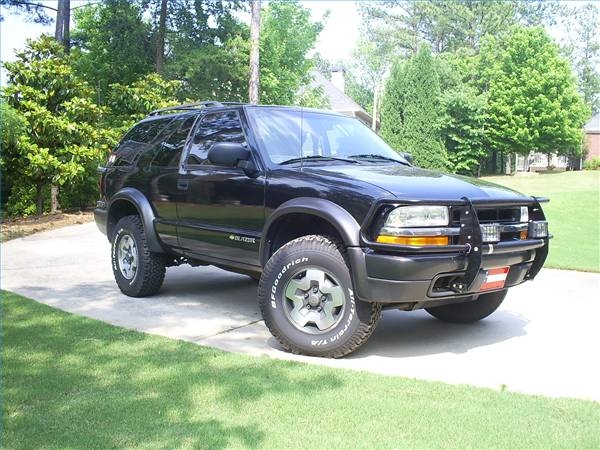
The 2001 Chevrolet Blazer came equipped with the 4L60E transmission, which is a variant of the 700R4 model that preceded it. This transmission is an electronically controlled, four-gear unit with an oil cooler built into the front radiator. The average backyard mechanic can troubleshoot the transmission in about 30 minutes.
Check for leaks by crawling underneath the truck and inspecting the transmission. The location of the leak is important, so wipe off any leaking fluid and wait for the leak to return. Fluid can leak from the front and drip down or back due to the forces of driving. If the leak is coming from the crease around the transmission's pan, then the pan gasket could be at fault. If the leak is coming from the front of the unit where it meets the engine, the main front seal is damaged.
Check the condition of the fluid from the dipstick, located behind the engine oil filler neck at the rear of the motor. The fluid should be a red color and translucent. Brown or black oil is a clear indicator of internal transmission damage. It should have a sweet smell, not a burnt smoky odor. The oil is key to cooling the unit; if this fluid is burned up and dark, then the heat will not dissipate and internal parts such as the torque converter can become damaged quite easily.
Check the level of fluid on the dipstick while the truck is running. Crank the truck up and leave it in park while pulling the dipstick and inspecting where the fluid mark is on the tip of the stick. Low level from leaks can cause the transmission to shift sluggishly, or not at all, as the fluid in the pressurized channels within the transmission lowers beyond functionality. Top the fluid off by pouring it into the dipstick pipe with a funnel, and drive the truck for several miles. If the fluid leaks back out, and there is no leaking, then the torque converter or internal damage can be "eating" the fluid or burning it up quickly. In this case, the transmission can actually become a hazard to the rest of the truck and should be inspected by a shop immediately.
Check trouble codes from the computer by linking a scanning tool to the terminal underneath the driver's kick panel. Most auto parts stores will check these codes for free, and a code may have appeared that will give an indication of the issue.
Check the electrical connections to the upper electric vacuum switches on the 4L60E transmission by following their wires and checking to ensure the wire plugs are seated. This newer transmission uses sensor input from the engine to shift gears, unlike the 700R4 before it. Without these sensors in place and functional, the transmission will have trouble shifting.